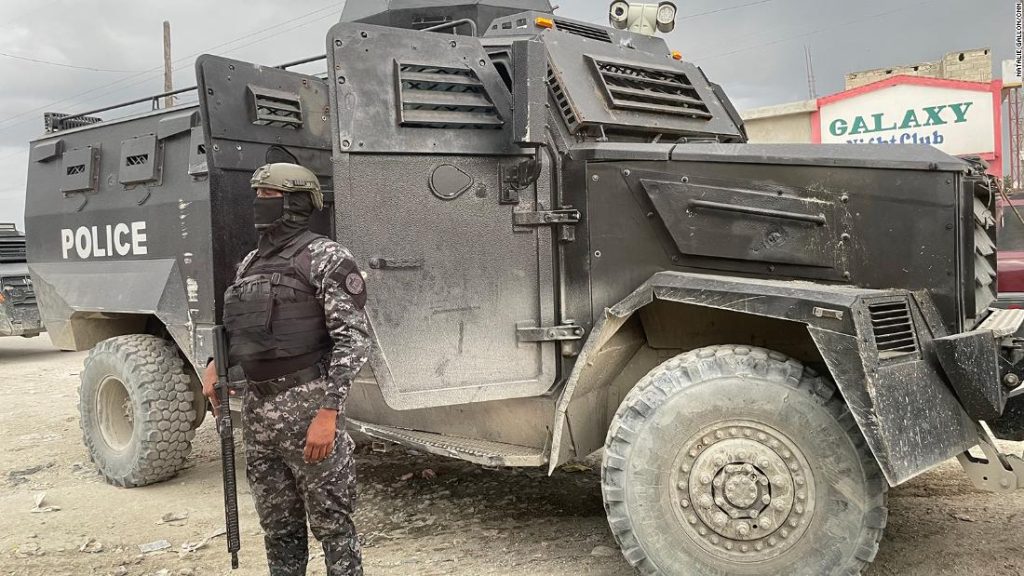Gangs gain the upper hand in war with Haitian police

“Can you see where it came from?” the SWAT members breathlessly asked each other inside the armored vehicle. It provides only a tiny sliver of a window onto the streets outside, which at one moment appear deserted, the next teeming with civilians trying to flee to safety.In the past 72 hours, police have killed a leader of the 400 Mawozo gang and rescued six hostages from them, they say. But the gang – one of dozens terrorizing the capital – have not been dislodged from these streets.”Can you see that red sign ‘SMS’? That’s them,” said a SWAT officer, indicating the gunmen’s position. Like his team, he did not want to be named, citing their safety. He pointed down the road towards a small shack, as dozens of people flooded from a side-alley into the street.”Get away,” he said to the crowd, over the armored car’s loudspeaker. “You’re too exposed. It’s dangerous.”The officer ordered the vehicle to move into a new position. “When we get to the spot, open up on anything that moves,” he said. Heavy gunfire between police and gang members followed. It is a common scene of injury, gunfire and panic in one of the dozens of neighborhoods controlled by gangs as Port-au-Prince appears to descend into a full-blown war between police and increasingly well-equipped and organized criminal groups.And this is a familiar routine: Police probe into gang areas to show their reach, and gangs respond with intense volleys of bullets.The numbers are as staggering as the risks. Previous journeys from this inlet have ended in tragedy. Johnny is unclear on the timing of the last boat, but precise about the potential losses: One recent trip he organized led to the deaths of 29 people.”The boat had an engine problem,” he said. “Water got inside the boat. We called for help, but they took too long. The boat was sinking while I was trying to save people. When help came, it was too late.”While CNN cannot independently confirm Johnny’s account of the system, two other locals who said they were involved in trafficking described similar details independently. Authorities in the neighboring Caribbean nations the Bahamas and Turks and Caicos have repeatedly reported finding the remains of would-be migrants after boats capsized in their waters.Despite the risks, many Haitians are still desperate for a way out. Locals on La Gonave told CNN that at least 40 people who aimed to attempt the boat trip were already on the island and the rest would follow from the mainland once Johnny said the boat was ready.One potential passenger, a university graduate who was once a teacher, described why he would risk all to take the voyage.”I worked as a teacher, but it did not work out. Now, I am driving a motorcycle every day in the sun and the dust. How will I be able to take care of my family when I have one?”He said he saved a year’s money to make the journey, and did not fear the rickety conditions of the boat. “I can be eaten by a shark or make it to America.”




